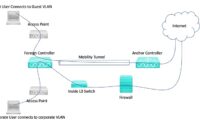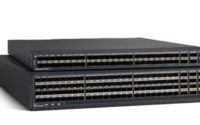Cisco UCCX(Contact Center) Administration and Scripting Series
Welcome to our comprehensive Cisco UCCX Administration and Scripting series, we will delve into the intricacies of Cisco UCCX (Contact Center) scripting. Whether you’re a beginner or looking to expand your knowledge, this blog will cover various topics such as UCCX call flow, UCCX Integration with UCCM, menu scripting, if statements, counter usage, handling holiday IVRs, perpetual calendar holidays, scripting switch steps, and much more.
1. Cisco UCCX Administration and Scripting – Call Flow And Key Terminologies
In the first session, we will provide a solid foundation by explaining the call flow of a contact center setup. covering the relevance of RMCM user, JTAPI user, and AXL API user. Additionally, we are covering the significance of CTI Route points and CTI ports within the CUCM environment. Moving on to UCCX-specific components, we will cover trigger points, call control groups (CCGs), resource groups, contact service queues (CSQs), and much more. Understanding these components is vital for building an efficient and effective contact center setup.
2. Cisco UCCX Integration With CUCM And Administration
In this session on CUCM integration, we have categorized the entire integration into four sections. The first section covers AXL user creation in CUCM. The second section focuses on UCCX side unified CM telephony configuration. The third section deals with end users and their associated controlled devices, including enrolling extensions for IPCC and the importance of RMCM and JTAPI application users. In the final section, we explore the configuration of applications, call control groups (CCGs), trigger points, resource group creation, and CSQ (Contact Service Queue).
2.1 UCCX – Agent Selection Based On Skill Rating
This session explains and demonstrates the process of configuring Resource Groups, Skills, and Contact Service Queues (CSQs). Additionally, it covers how to test these configurations using the Finesse Agent Desktop.
3. Cisco UCCX Menu Scripting
In this session, we will cover the Cisco UCCX Script Editor, Audacity audio editing tool, and building logic for menu scripting and provide a step-by-step guide on getting started with scripting using the UCCX Script Editor. We demonstrate the creation of variables and their usage within the script. Once the script is completed, we discuss script validation and guide you through the process of uploading it to the UCCX script repository. Finally, we conduct a test call to ensure the functionality of the programmed script.
4. UCCX Scripting – Usage Of Loop And If Statement
In this session, we will familiarize ourselves with using if conditions and increment techniques for integer variables. We will explore important use cases for if statements and increment statements, explaining them in a step-by-step manner. To ensure understanding, we will test the script by making a call to the trigger number.
5. Scripting for Handling Holiday, Weekend, and Off Business Hours
This session focuses on UCCX scripting techniques for handling holidays, weekdays, weekends, and off-business hours using the “day of week” and “time of day” options. We will explore capturing the current date during runtime using D[now] and we will be utilizing the “set” statement and boolean operations to achieve the desired result. Following the completion of the scripting, we will upload it to the UCCX script repository and perform a test call to ensure proper functionality.
6. Scripting – IVR – Holiday Handling For Perpetual Calendar
This session explores UCCX scripting techniques for accommodating holidays that follow a perpetual calendar, such as US Memorial Day. Unlike fixed-date holidays like December 25, these holidays rely on specific days of the week and month, like the last Monday of May. Scripting for these holidays can be challenging, but we provide detailed step-by-step instructions in this session.
8. Scripting – Familiarising Switch Step
In this session, we will explore effective scripting techniques for multiple holidays and play specific prompts for each one. One approach is using an if statement for each holiday, which can be complex. However, Cisco UCCX offers a simpler solution called the “Switch Step.” The switch step accepts a value, compares it with defined cases, and takes action based on the specified case statement. This provides an efficient alternative to using multiple if statements.
9. UCCX Scripting -“Set Enterprise Call Info” & “Get Call Contact Info”
In this session, we’ll learn how to retrieve the caller’s number using ‘Get Call Contact Info’ and show it to the agent using “Set Enterprise Call Info” before the call connects. This aids the agent in assisting the customer more effectively. In practice, the collected data is sent to a backend Database, which then retrieves essential information like account number or balance for the agent to use.
Conclusion
Mastering UCCX scripting is essential for effectively managing a Cisco UCCX contact center. From understanding call flow and integrating with CUCM to handling holidays, scripting menus, and utilizing advanced techniques like if statements and the switch step, this comprehensive series provides the knowledge and step-by-step instructions needed to create powerful and efficient UCCX scripts. Enhance your contact center’s functionality and performance by unlocking the full potential of UCCX scripting. I will be uploading more videos to this channel for this series, so stay tuned!



good stuff Anas to put all stuff in one page
nice one anas… keep going
Would like to see some WebEx contact center stuff please…this is very helpful Anas….
Thanks Shameer for the feedback.
Thanks Saiyed for the feedback. Will try to do WebEx CC in a while.
Thanks Anas